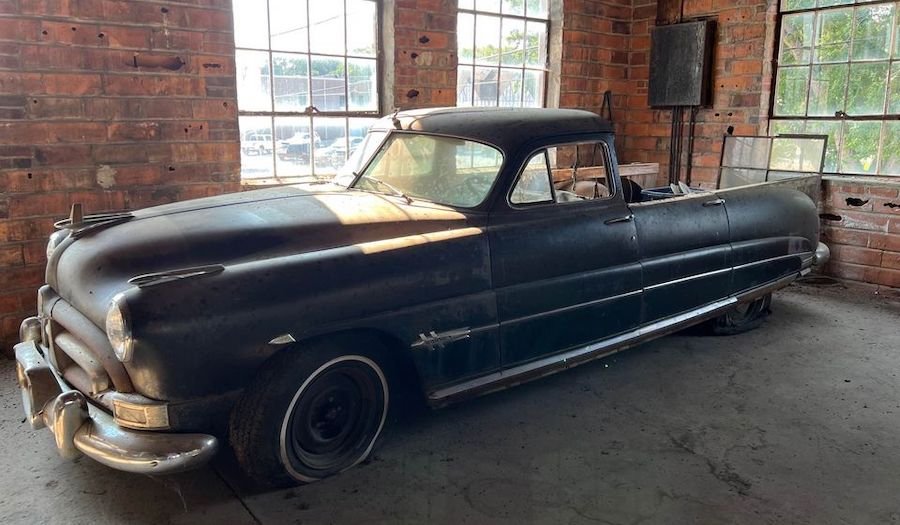1951 Hudson Hornet Used To Be a Camper, Now It's a Strange Four-Door Pickup

But that didn't last long. The first-generation Hornet was discontinued in 1954 when Hudson and Nash-Kelvinator merged to form American Motors Corporation (AMC). The nameplate returned for 1955, but it was an entirely different rig.
AMC dropped the "step-down" platform and produced the second-gen Hornet using the senior Nash platform. The legendary 308-cubic-inch (5.0-liter) inline-six engine was joined by V8 powerplants. The Hornet was discontinued for good in 1957 when the Hudson brand was also retired.
Once an innovative and race-winning vehicle, the first-gen Hornet is now largely forgotten. And even though it's far from rare, at 131,628 units built (1951-1954), Hudson's most iconic model is a rare sight nowadays. And that's mostly because many examples were left to rot away in junkyards and barns.
The 1951 four-door you see here is not a rust bucket, but it had a rough life. Now residing in a building in Ida Grove, Iowa, this first-year Hudson was converted to a camper by a previous owner. The roof was chopped off behind the B-pillars, and wooden boards were added to square off the sleek rear section, thus making it suitable for a camper top.
There's no info on whether it was a home-built project or a professional conversion, but the camper section has since been removed. The interior was also gutted, with only a pair of spare tires occupying the space behind the front bench seat. The Hornet now looks like a four-door pickup contraption, a rather strange appearance for a classic with NASCAR-winning heritage.
The vehicle is otherwise in decent condition. Sure, there's some rust, the paint is weathered, and the cabin is a mess, but the Hornet is a suitable project car. And surprisingly enough, the original powerplant is still under the hood.
The first-gen Hornet was only available with a 308-cubic-inch inline-six. Thanks to a two-barrel carburetor setup, the high-compression unit delivered 145 horsepower and 275 pound-feet (373 Nm) of torque. Output was increased to 170 horsepower for the 1954 model year. Transmission options included a three-speed manual and a GM-sourced automatic.
Whether this Hornet is suitable for restoration depends on how much you're willing to invest. Fixing the cabin and giving the sedan a proper makeover will cost more than the average price of 1951 Hornets in Excellent condition (more than $50,000). If you want to give it a go or simply use the four-door as a donor car, the seller wants only $1,700 to part ways with it.
Notícias Relacionadas
